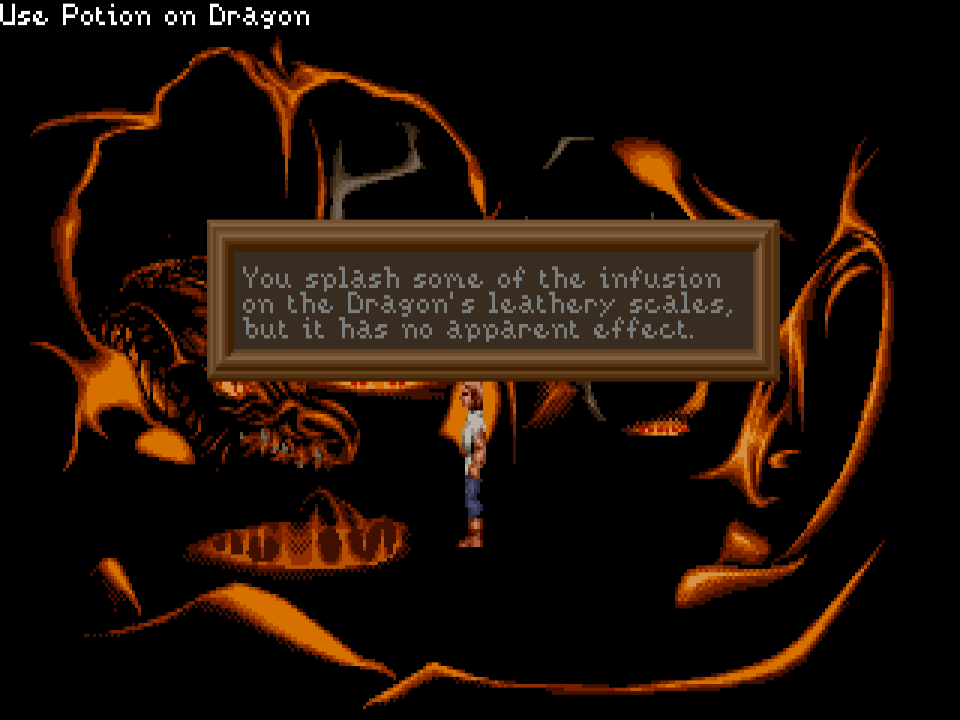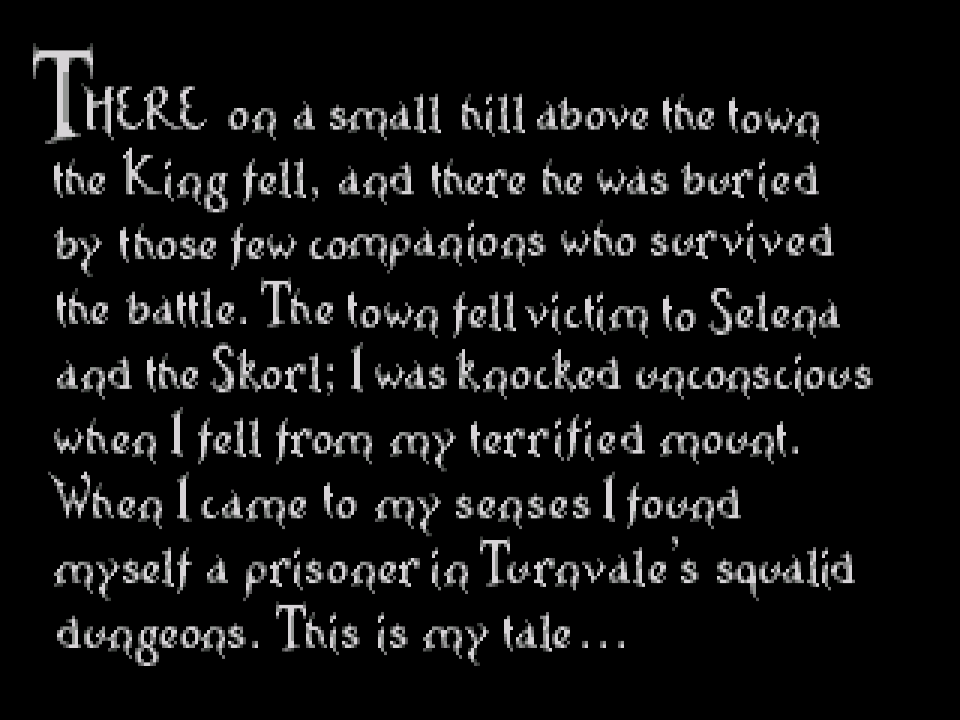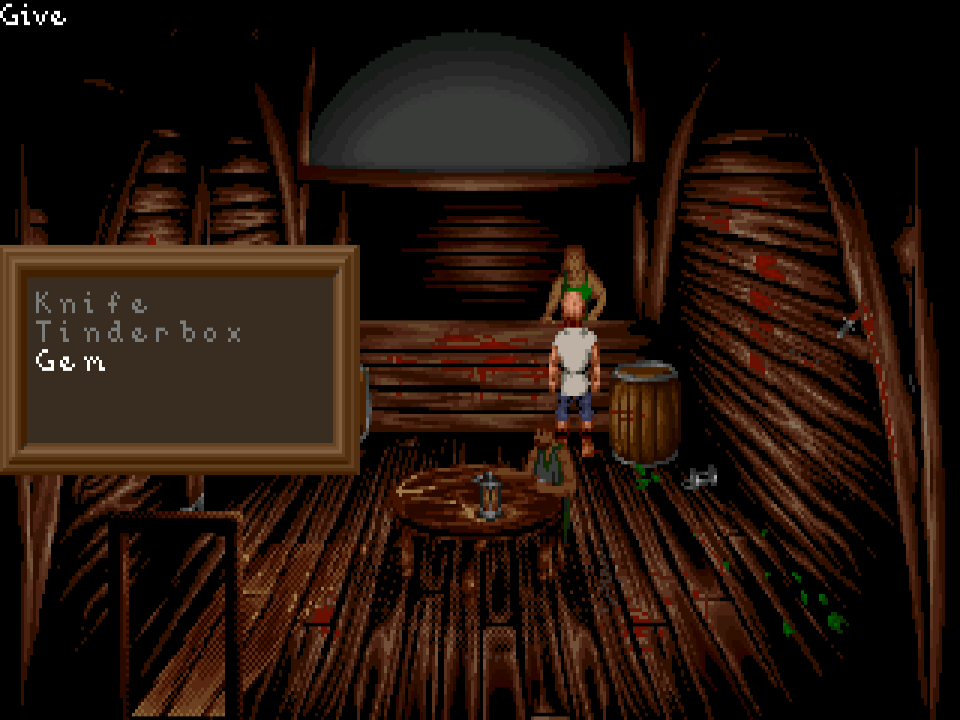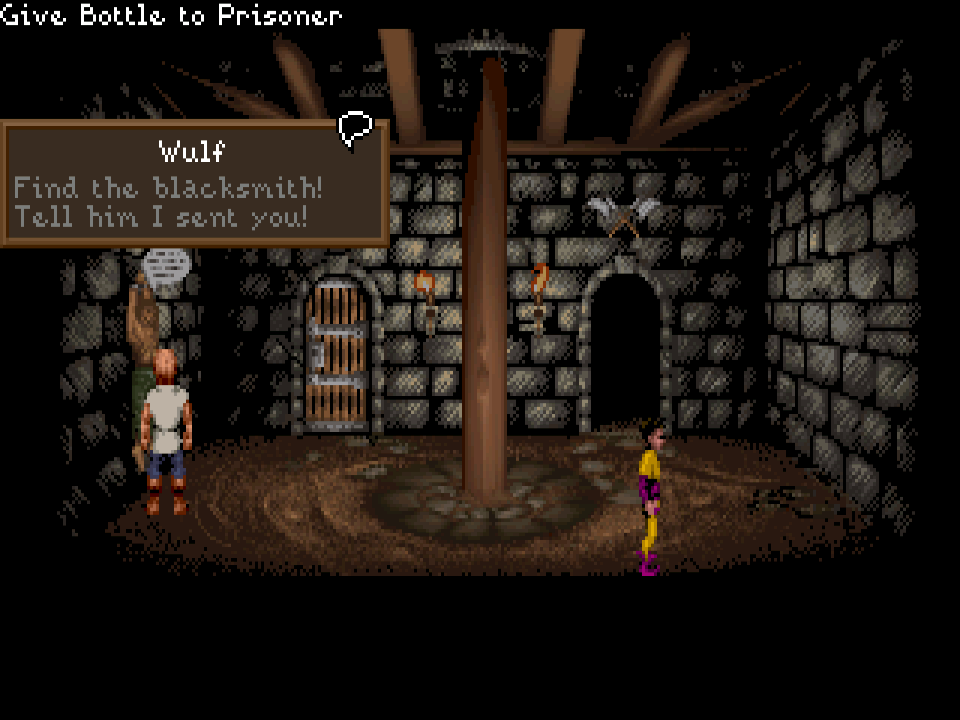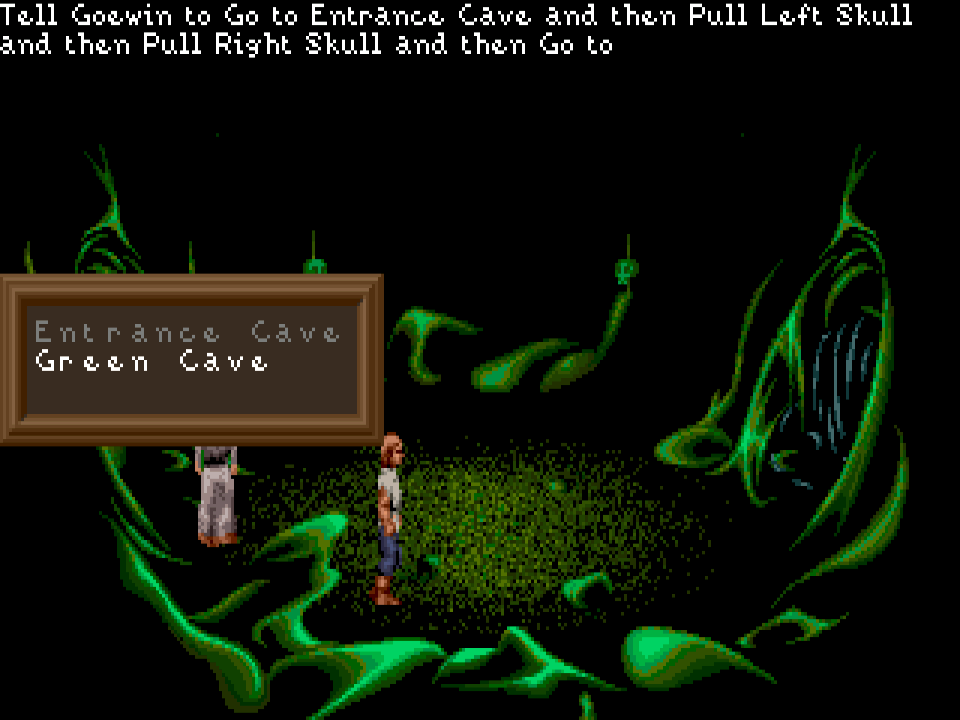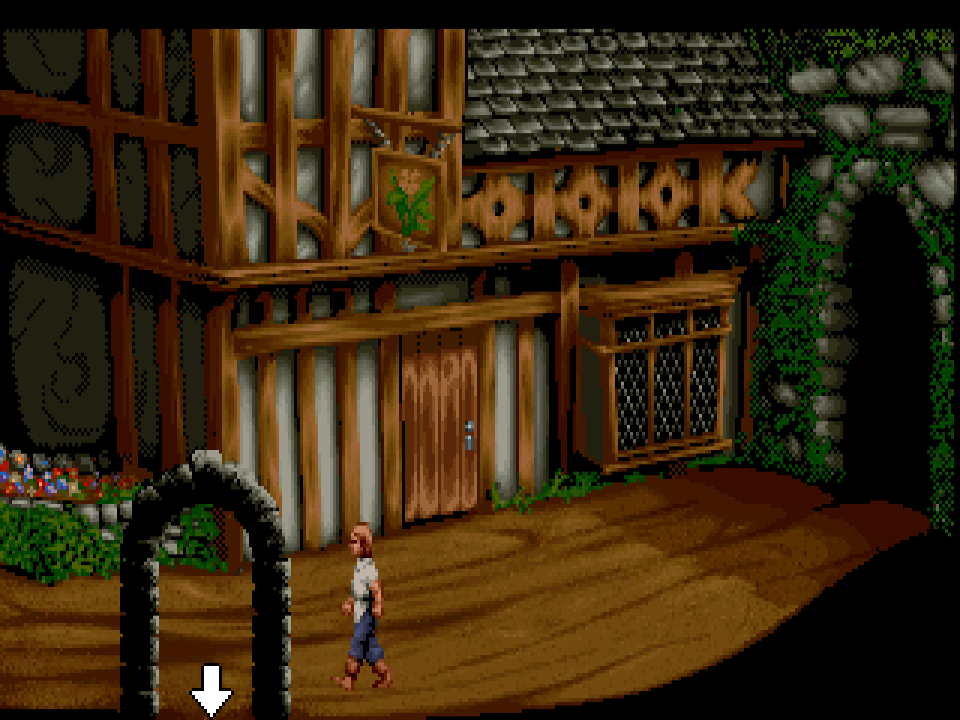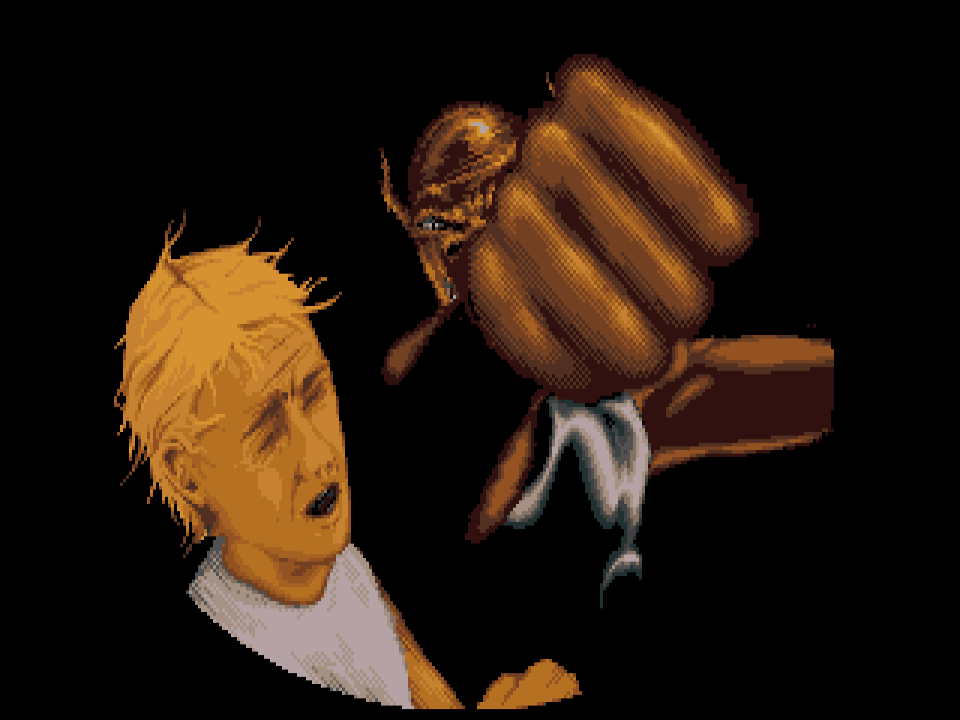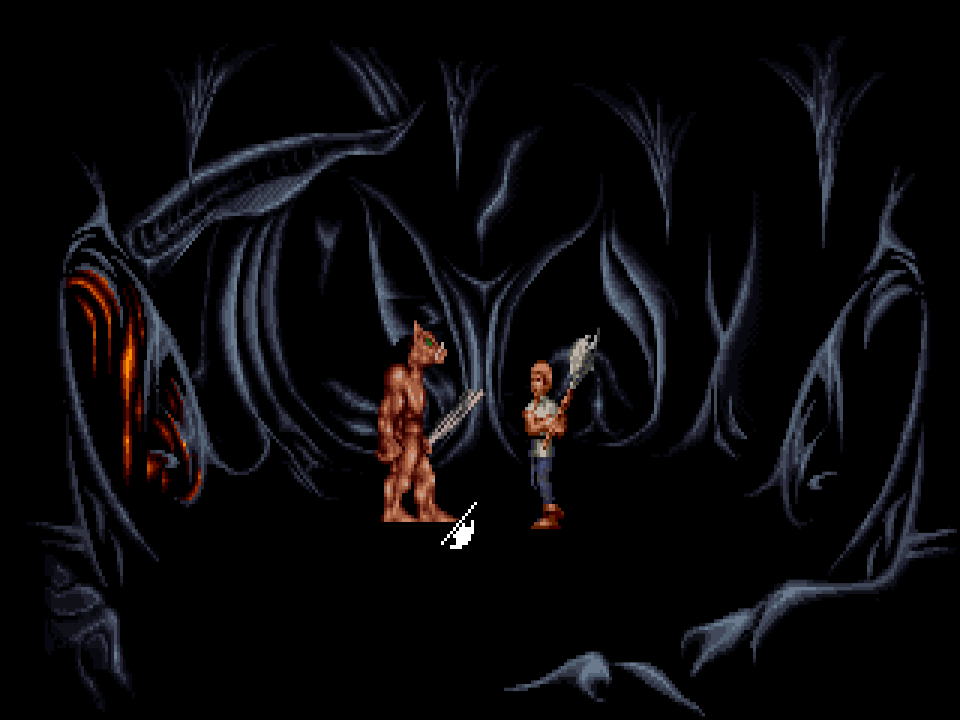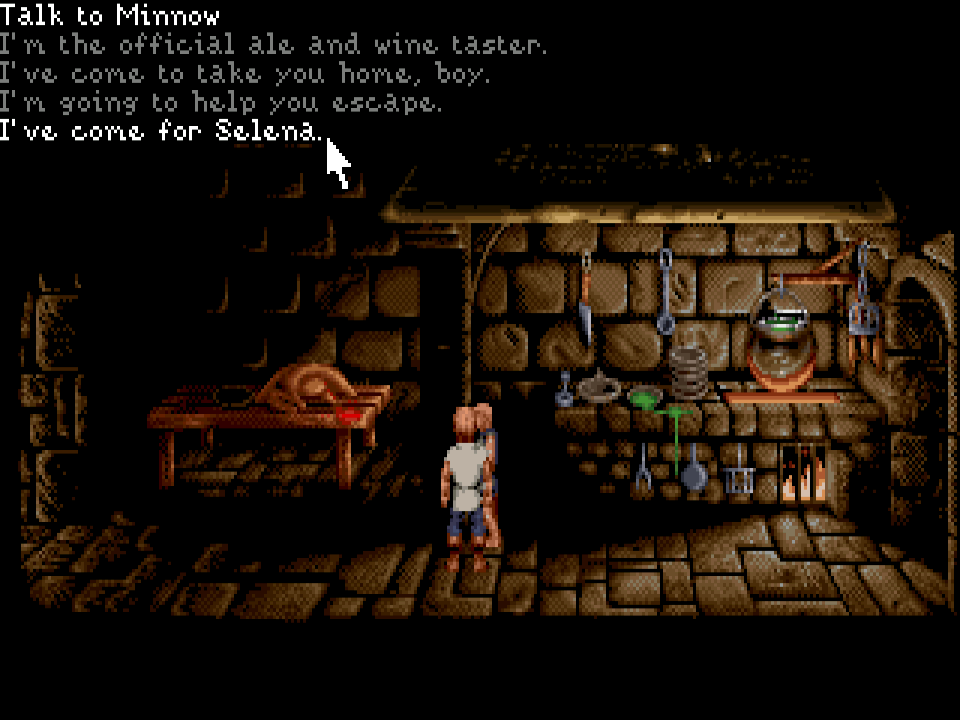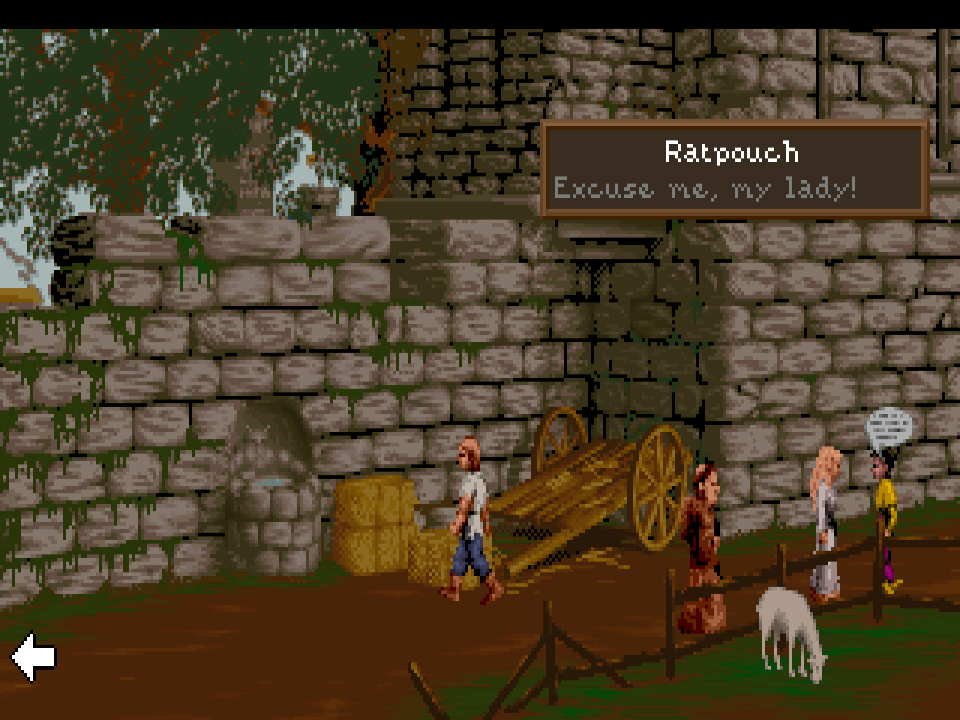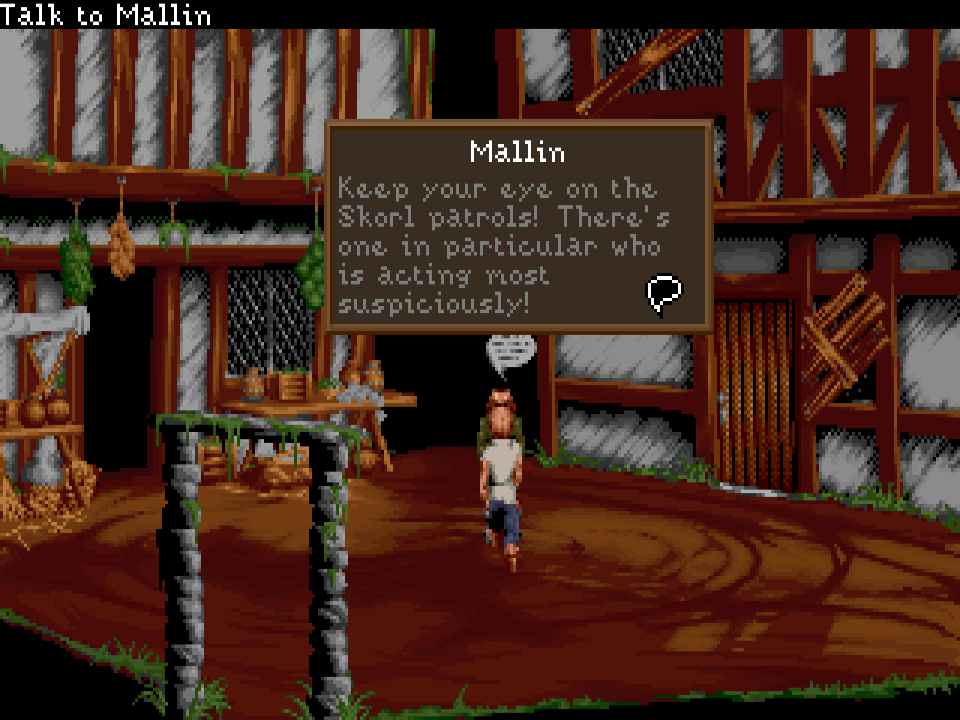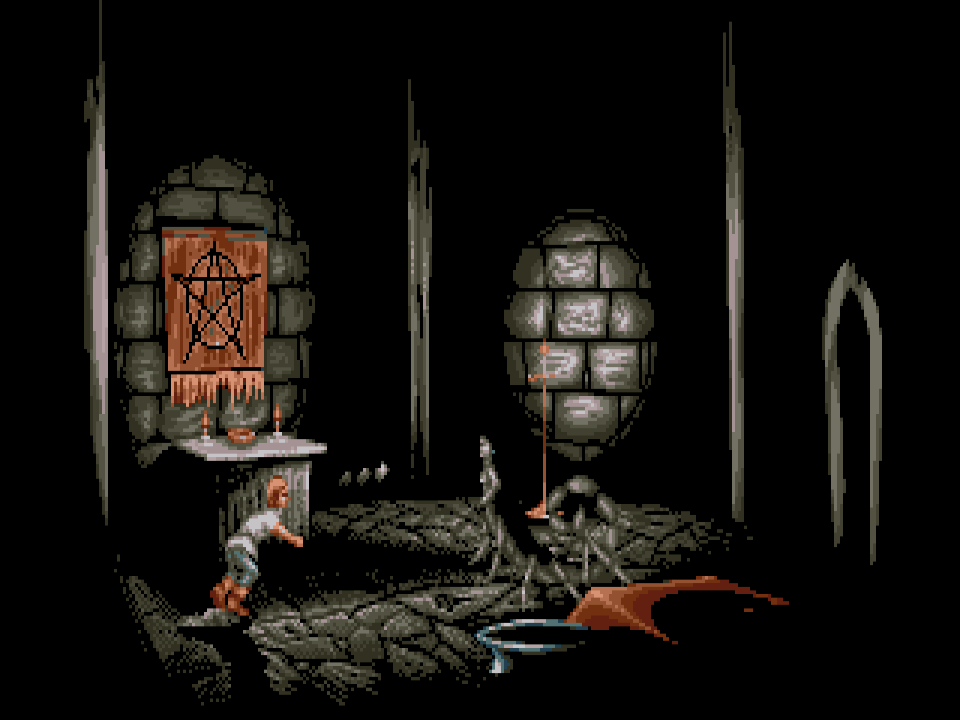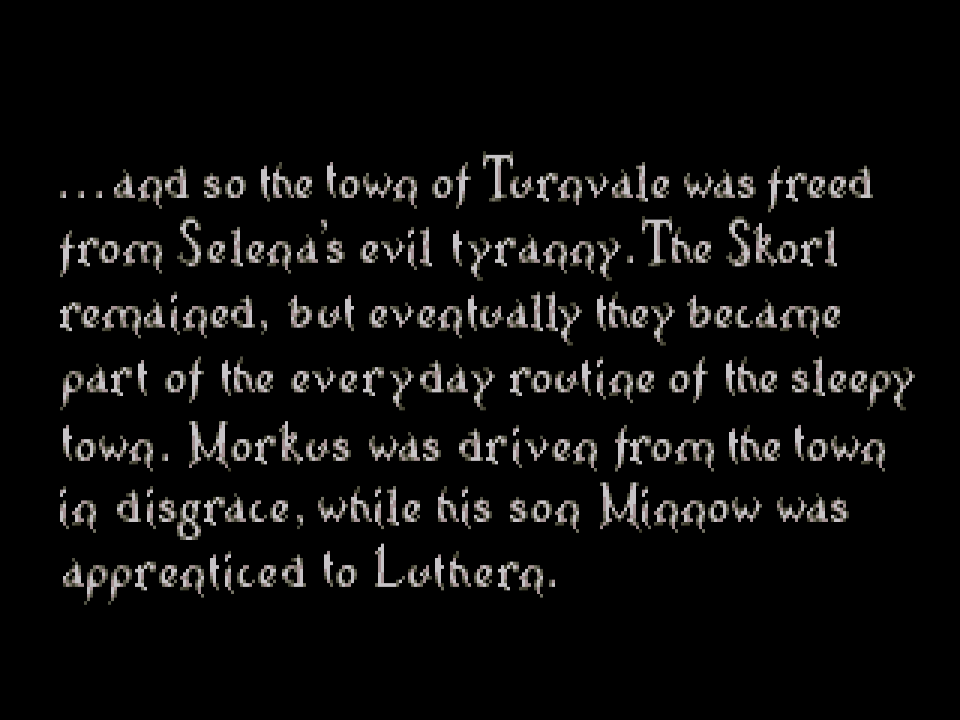Lure of the Temptress (Revolution Software) - 1992
Series: Let's Adventure! A Journey into Adventure Games (1980-1999)This review is part of the Let's Adventure! series. See all reviewed games sorted by rating here.
- ← Dallas Quest (Datasoft) - 1984
- Lure of the Temptress (Revolution Software) - 1992
- → Police Quest: Open Season (Sierra On-Line) - 1993
Article 74 of 101 in this series.
Lure of the Temptress is a point-and-click adventure game published by Virgin Interactive Entertainment in June 1992 for Atari ST, MS-DOS, and Amiga. It was the first game developed by Revolution Software and uses their proprietary Virtual Theatre engine.
The medieval town of Turnvale has fallen into the hands of the evil sorceress Selena. She is controlling an army of an orc-like warrior race Skorl, who serve her with devotion. The Skorl hate humans and have terrorized the town and the nearby land. Diermot is an ordinary fellow who was captured by the Skorl and thrown into prison. His first task will be to escape. After gaining his freedom, Diermot will also have to find out how to liberate his entire homeland from the clutches of the villains.1
The game starts off with a short intro sequence that lays out the story. This is presented as mostly static images followed by walls of text, but it gets the point across pretty succinctly and then turns control over to you.
Interaction with the game world is intuitive for anyone familiar with adventure games. You move a cursor around the screen, which will change shape and call out action areas in the top left when you hover over them.
Right-clicking on an action area will bring up a list of verbs you can select from to interact with it, and depending on the verb additional options will be made available.
Though certain verbs such as GET, PULL, PUSH, and USE are typically always available, additional interaction options like TALK TO won’t appear unless you select an NPC, or OPEN if you select a door.
The initial sequence in the prison where you start the game gets you acclimatized to the controls and introduces you to the first NPC, Ratpouch.
This was also where this became immediately frustrating, as once we escaped the dungeon Ratpouch wouldn’t follow me. I think I was about 20 minutes into this game before I was looking on forums for help to get this stupid NPC to follow me.
One interesting mechanic of this game is that certain NPCs will join you throughout the game, and once they do you can give them commands via the TELL verb. You can use this give them simple tasks, or chain together multiple commands to give them something more complex to do.
Command chaining is required at one point in a cave where pulling certain skulls will open doors, but you need to coordinate these actions from different rooms. You’ll need to tell your companion NPC to first go to a different room, then pull a skull, then the other, then go to yet another room.
Figuring out the proper sequence of commands can be a bit frustrating as regardless of what commands Diermot issues, the result is the NPC agreeing and heading off to perform the actions … even if they’re not going to be helpful.
Navigating the game world is straightforward as all exits are easily identifiable. The cursor will change to an arrow if you can exit the current screen in that direction, and once a door has been opened, the cursor will change to an arrow when you hover over it as well.
The game’s visual style is good, and though there aren’t really any cutscenes the odd time that one is presented it’s typically well done.
Unlike many games of this era, death isn’t waiting around every corner. I only found a handful of situations in this game that would result in a game over but I still found myself saving frequently “just in case”.
Though only used twice, there is a combat element to this game. When in the cave you find an axe and will have to fight a boar looking creature. I don’t know if this is also supposed to be a Skorl, but there’s really no details given and you kind of just get dropped into this sequence and are left to figure it out.
Combat just involves moving the mouse to either a high/medium/low position in front of you then left/right clicking to attack or block. Clicking both mouse buttons jumps. You need to hit this boar thing about 6-7 times to kill it, and if he hits you that many times you’ll die.
The story progresses through a series of interactions with characters in town, then in the castle. These interactions are navigated using dialog trees, which are pretty common for adventure games of this era.
You’re typically presented with a number of options to choose from, with additional options being added based on other interactions you’ve had, items you’ve picked up or plot points you’ve completed.
Characters have their own “schedules”, so they’ll roam around town and perform certain actions at certain times. If a character bumps into you or another NPC they’ll apologize and try to navigate around the obstacle.
This can get a little funny when you have 2-3 characters on screen and you sort of stand between them all and watch them jostle around, constantly apologizing.
These NPCs include the Skorl, and to advance to the castle you’ll need to talk to Mallin to get a clue that there’s a Skorl acting suspiciously. When this happens you need to find a Skorl NPC and follow him around until he goes into a shop, where you can spy on him through the window.
When you learn the Skorl is going to take the shopkeeper to the castle in a barrel, you take his place to get transported there instead.
The final sequence is pretty straightforward and involves some item combination puzzles and a timing puzzle whereby you have to TELL Minnow to pull a lever so you can turn a crank and lower the drawbridge.
Crossing the drawbridge triggers the second combat sequence of the game with another boar looking thing. After defeating him you advance to Selena’s room, where she turns into a scorpion and you automatically throw the Eye of Gethryn at her and the game is done.
Overall this game is not great, but it’s not bad. The puzzles weren’t overly complicated and there really aren’t that many areas to explore so the fact that there’s a lot of backtracking to complete fetch quests or find NPCs to talk to doesn’t get too frustrating.
I had problems getting the music to work, but this is apparently also a common issue. I ended up sorting this out by changing my ScummVM configuration to use FluidSynth instead of the MT-32 emulator I typically used.
This got the sound and music working, but the background music is typically just one or two notes repeated periodically. It’s actually pretty annoying so the effort I went to to get this fixed wasn’t really worth it.
I did find the TELL mechanic innovative, though underused. Being able to direct multiple NPCs at once could have made for some interesting puzzle designs, but I’m satisfied with what I got so this isn’t really a complaint.
Lure of the Temptress is free to download from ScummVM so there’s really no reason not to give it a go if you’re a fan of the genre. It’s relatively short and fairly straightforward to play, though if you’re looking for a much better title from Revolution Software I would point you to Beneath a Steel Sky instead 😉.
Game Information
| Game | Lure of the Temptress |
| Developer | Revolution Software |
| Publisher | Virgin Interactive Entertainment |
| Release Date | June 1992 |
| Systems | DOS, Amiga, Atari ST |
| Game Engine | Virtual Theatre |
My Playthrough
| How Long To Beat? | 4 hours |
| Version Played | DOS via ScummVM |
| Notes | Walkthrough, Manual |
Score
See here for a refresher on how we’re scoring these games.
| Atmosphere (20) | 13 |
| Story (25) | 10 |
| Experience (15) | 5 |
| Impact (10) | 4 |
| 46% |
Gallery
Footnotes
Description from Moby Games ↩︎

